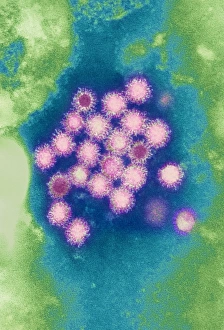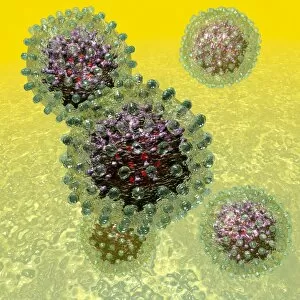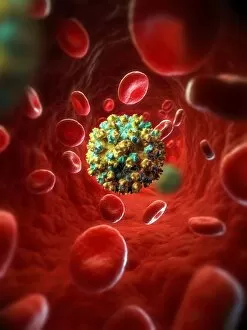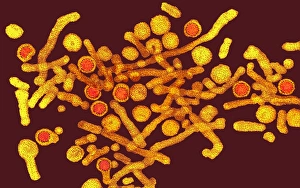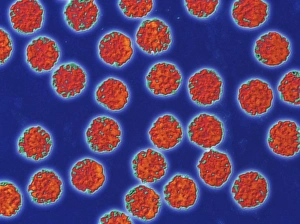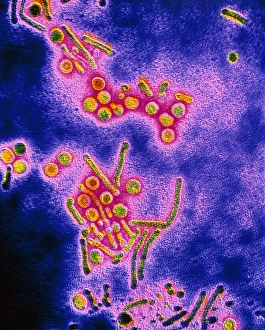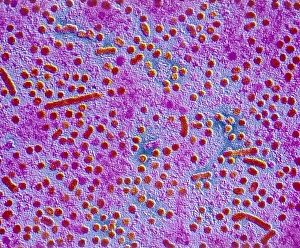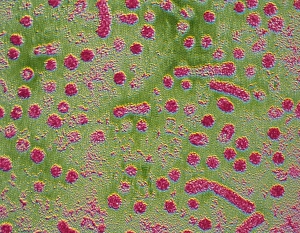Hepatitis B Collection
"Hepatitis B: Unveiling the Silent Threat" Hepatitis B viruses, microscopic entities that can wreak havoc on our liver health
All Professionally Made to Order for Quick Shipping
"Hepatitis B: Unveiling the Silent Threat" Hepatitis B viruses, microscopic entities that can wreak havoc on our liver health. These tiny culprits are responsible for causing Hepatitis B, a potentially life-threatening infection. Through a transmission electron microscope (TEM), we get an up-close look at these elusive viruses. Artwork C016 / 9097 showcases the intricate structure virus particles. Their unique shape and composition make them distinct from other viral strains. A conceptual image of the hepatitis virus further emphasizes its significance as a global health concern. Interestingly, swine vesicular disease virus shares similarities with Hepatitis B in terms of structure and behavior, as depicted in this artwork. This connection highlights the importance of understanding various viral infections to combat their spread effectively. Delving deeper into Hepatitis B's impact, artwork F007 / 7949 portrays how it infiltrates liver cells and disrupts their normal functions. The consequences can be severe if left untreated or undiagnosed, leading to chronic liver diseases such as cirrhosis or even hepatocellular carcinoma. Awareness is key when it comes to combating Hepatitis B; hence artwork F007 / 7835 sheds light on prevention strategies like vaccination programs and safe practices to reduce transmission risks. To fully comprehend the complexity of this virus, artwork F007 / 7885 provides insight into its genetic makeup and replication process within host cells. Such knowledge aids scientists in developing effective antiviral therapies against this persistent foe. While primarily associated with human infections, some plant viruses share structural similarities with Hepatitis B particles too. Tomato aspermy virus particle serves as an example in this captivating artwork display. The battle against Hepatitis B continues through ongoing research efforts showcased by artistic depictions of hepatitis infection (artwork) and detailed visualization of individual viral particles (F005 / 0700). These images remind us that vigilance and education are crucial in preventing the spread of this silent threat.

